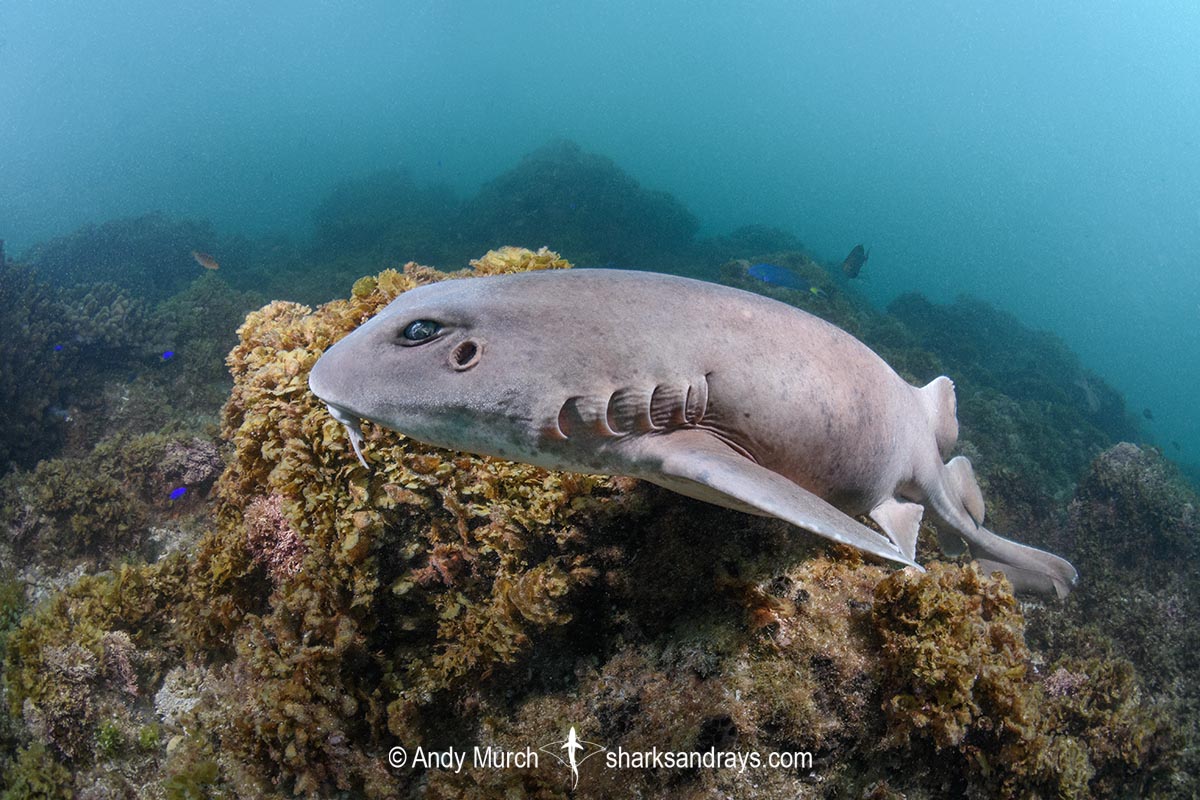Common names
Colclough’s Shark, Bluegrey Carpetshark.
Binomial
Brachaelurus colcloughi.
Synonyms
Identification
A small, heavy-bodied shark. Head broad. Snout short and rounded. Nasal flaps form long, prominent barbells. Spiracles large. First dorsal fin high, origin posterior to pelvic fin origin. Second dorsal lower than first. Dorsal apices obtusely angular with sloping posterior margins. Lower caudal lobe deep with a broadly rounded margin. Upper caudal lobe smaller, apex rounded.
Dorsal coloration uniformly grey in adults. Juveniles have dusky saddles and fin tips. Ventrum pale.
Size
Maximum length at least 85cm. Size at birth 17-19cm.

Conservation Status
VULNERABLE
Although the Colclough’s shark’s preference for rocky habitats may offer this species some protection from fishing, its limited range and paucity of sightings is a cause for concern. The IUCN estimates that Brachaelurus colcloughi numbers in decline.

Habitat
A warm temperate/subtropical species found on rocky and coral reefs and course sand. From extremely shallow water to 217m, but usually shallower than 100m.
Distribution
East coast of Australia. Found from a small section of coastline from Bryon Bay, New South Wales, to the Hardline Reefs in Queensland.
Reproduction
Viviparous with yolk-sac. 2-7 pups per litter. Reproductive cycle estimated to be 2-3 years.
Diet
Feeds on small fishes.
Behavior
Nocturnal predator. Colclough’s sharks rest within deep reef crevices by day.
Reaction to divers
When encountered during the day, Colclough’s sharks generally remain motionless or try to bury deeper into their hiding places.
Diving logistics
Julian Rocks in Byron Bay is the only place where Colclough’s sharks are seen with any regularity. Although sightings are not guaranteed, during the summer months, the dive masters at Sundive Byron Bay know exactly where to look for them.
The scientific literature states that most fisheries sightings are from Moreton Bay in southern Queensland, but there are few records of encounters by divers in this area.
What’s new
View our full list of updates
Similar species
Blind Shark Very similar but distinguished by white spots and more vertical posterior margins of dorsal fins.






